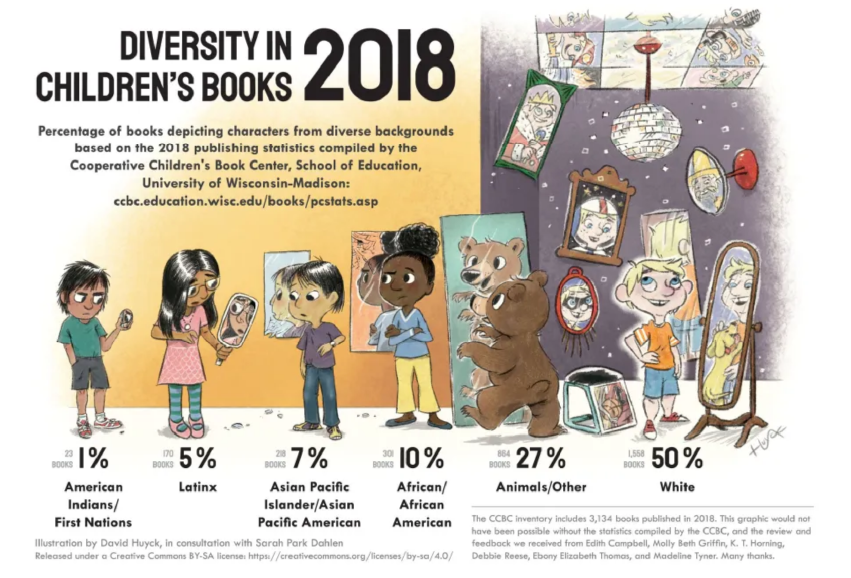You are here
Equity, Diversity and Inclusion
Equity, Diversity and Inclusion
All children need diverse books to offer them windows into the experiences of others, and mirrors that reflect their own experiences. Together we will explore how to integrate picture books and music that honor our differences into every storytime theme as well as how to evaluate diverse materials that respect different cultures, lifestyles, and “own voices” literature.
Research shows that children notice race at a very young age, and often draw erroneous conclusions if no one speaks to them about it. With a focus on story time, programming, collection development and user services, we will discuss and model ways librarians can talk about race and racism in age appropriate ways with children.
Diversity in Children's Books 2018 Infographic
National Equity, Diversity and Inclusion Programs
An online, self-paced anti-racism curriculum for library staff serving youth.
Seeking to address challenges today's youth face through a grassroots effort by offering education, resources, and community.
Offering tools, research, tips, and strategies for people who want to increase their own understanding and to help those working for racial justice.
The CCBC documents the number of books it receives annually that are by and about Black, Indigenous and People of Color and other aspects of diversity. This page provides links to CCBC diversity resources, and selected links to resources beyond the CCBC.
Supporting collection development and reader's advisory with the analysis of picture books featuring Black and Indigenous people and People of Color (BIPOC).
An organization promoting advancement in the creation and publication of books in which all children can see themselves.
Creates an annual summer reading list and other materials and opportunities to recognize the humanity of Indigenous and People of Color (IPOC) in youth literature.
We will continue to compile resources to support your organization's equity, diversity, and inclusion advancement. To add to this list, please contact us.
Lessons Learned from the SPELL Project
The SPELL project ran from 2012 – 2016 engaging several Colorado libraries. Lessons learned helped generate ideas for serving low-income families with early literacy best practices. Find more information to design your own SPELL project – and why.
Eliminating Overdue Fines and Fees for Lost/Damaged Materials
After parents reported heartbreaking stories about their reluctance to check out books for their young children because they could not afford the fines, the Colorado State Library looked into the details of charging overdue fines. What they discovered might surprise you!
Reaching and Supporting Parents of Young Children
Recommendations from the SPELL project for staff training, library spaces, collections, programs, policies, and customer services for reaching this vital audience. You will also find information on potential partners and how to engage them. Parents and their young children are worth the investment.
Eliminating Barriers to Library Use
Understanding circumstances that lead to non-library use is key to strategizing ways to reach this audience. Take a look at Longmont Public Library’s example for inspiration. The positive implications for encouraging non-library users to become library users are significant!







Connect With Us





